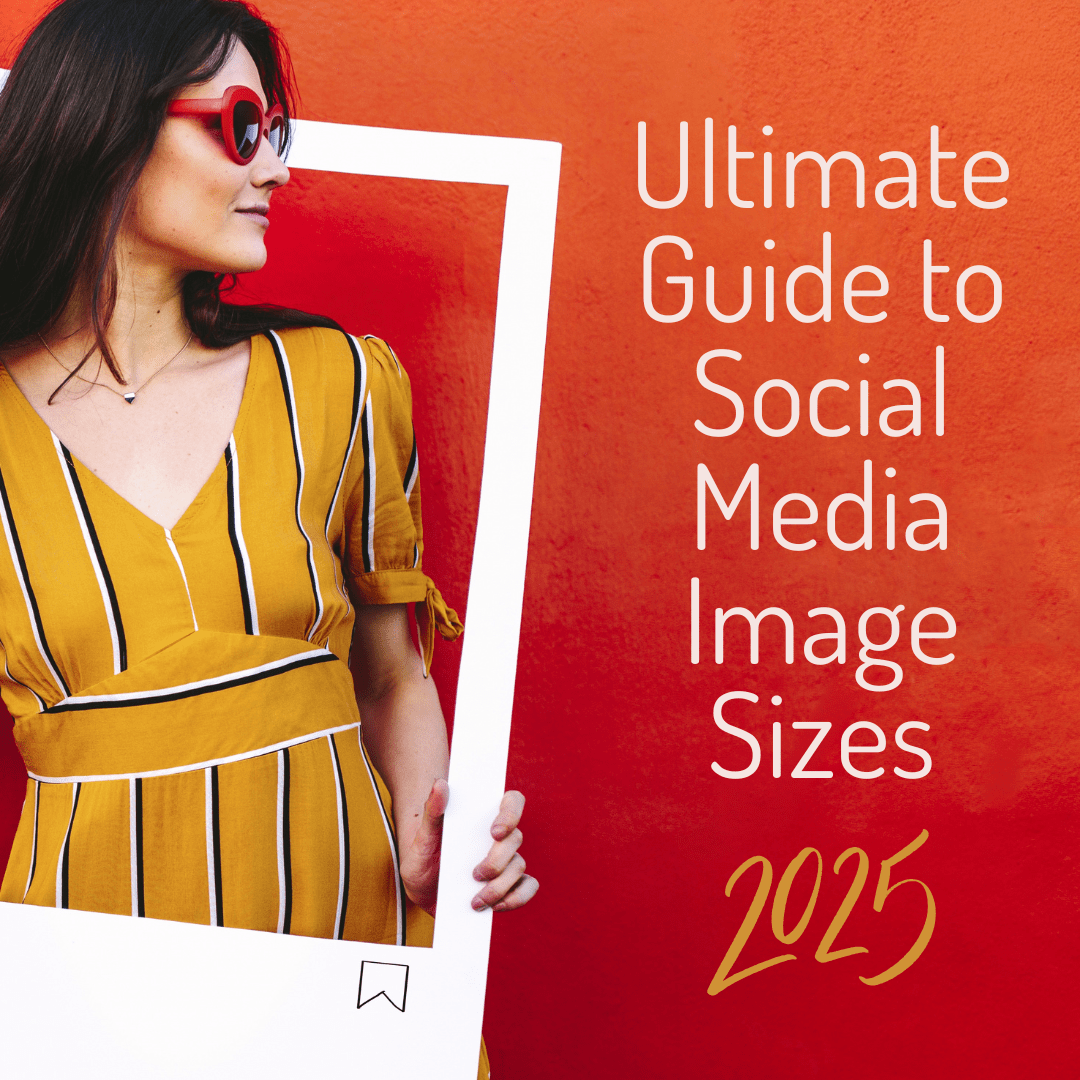Introduction
Social media is an ever-shifting landscape, and keeping your image dimensions up to date is key to making the best first impression on potential clients and followers. Whether you’re sharing product shots, team photos, or engaging graphics, properly sized images enhance professionalism and help you stand out from the crowd. Below, we’ve compiled the most current recommended image dimensions for Facebook, Instagram, X (formerly Twitter), and LinkedIn—so you can stay ahead in 2025.
1. Profile Photo
- Recommended Upload Size: 180 × 180 pixels (displays at about 170 × 170 on desktop).
- Why It Matters: This small space is your brand’s first impression. A clear, high-resolution logo or photo ensures followers immediately recognize your page.
2. Cover Photo
- Recommended Upload Size: 820 × 312 pixels (desktop).
- Safe Zone: Mobile devices often crop the edges, so keep crucial text or visuals centered.
- Pro Tip: Use high-resolution images to prevent pixelation. Facebook compresses images, so starting with a larger, clean file helps maintain quality.
3. Shared Images and Links
- Shared Image: 1200 × 630 pixels (works well for images in posts).
- Shared Link Preview: 1200 × 628 pixels (Facebook adjusts the preview display, but uploading an image this size helps control cropping).
- Tip: Maintain a 1.91:1 ratio to ensure your link previews appear optimally in the News Feed.
1. Profile Photo
- Recommended Size: 110 × 110 pixels (displays at about 110 × 110 on mobile).
- Tip: For brands, make sure your logo or brand mark is centered and easily visible at a small size.
2. Posts
- Square Posts: 1080 × 1080 pixels (this remains Instagram’s classic standard).
- Vertical (Portrait): 1080 × 1350 pixels (ideal for maximizing mobile screen space).
- Horizontal (Landscape): 1080 × 566 pixels (less common, but useful for wide shots).
3. Stories & Reels
- Stories: 1080 × 1920 pixels, with safe margins at the top and bottom (Instagram’s interface may cover some content).
- Reels: 1080 × 1920 pixels in a vertical (9:16) format. Plan for text placement; essential text should remain within the 4:5 safe zone for best visibility.
X (Formerly Twitter)
1. Profile Photo
- Recommended Size: 400 × 400 pixels.
- Tip: Use a circular-friendly logo or photo so it scales neatly into the platform’s circular crop.
2. Header Photo
- Recommended Size: 1500 × 500 pixels.
- Safe Zone: The center area remains visible on both desktop and mobile. Avoid placing text or logos too close to the edges.
3. In-Stream (Shared) Images
- Recommended Size: 1200 × 675 pixels (aspect ratio around 16:9).
- Pro Tip: Larger images (like 1600 × 900) may be auto-cropped but can still appear crisp if scaled properly.
1. Personal Profile Photo
- Recommended Size: 400 × 400 pixels.
- Tip: Go for a clean headshot with good lighting if it’s a personal profile, or a crisp, centered logo if it’s a brand “face.”
2. Personal Background Image
- Recommended Size: 1584 × 396 pixels.
- Importance: This header space is often underused. A professional, relevant backdrop can set you apart and reinforce your brand identity or personal expertise.
3. Company Logo
- Recommended Size: 300 × 300 pixels.
- Note: This appears on your company page and in feeds, so ensure it’s high-resolution and easily identifiable.
4. Company Cover Image
- Recommended Size: 1128 × 191 pixels.
- Best Practices: Similar to other cover photos, center critical visual elements and text. Keep any slogans or core messages within a safe central area.
5. Shared Link Images
- Recommended Size: 1200 × 627 pixels.
- Why It Matters: LinkedIn previews automatically adjust, but uploading at 1200 × 627 helps maintain clarity and prevent awkward crops.
General Best Practices
- Consider File Types: PNG files often retain more detail for logos and graphics, whereas JPEGs can be sufficient for photography.
- Use High-Resolution Images: Even if the platform compresses your visuals, starting with a higher-quality image can reduce the risk of pixelation.
- Mobile Responsiveness: Always preview images on mobile devices. Over half of users browse social media exclusively on smartphones.
- Keep Text Minimal: Platforms like Instagram and LinkedIn may compress visuals differently. The more you place text near edges, the more likely it gets cropped.
- Update Regularly: Social media platforms frequently revise their recommended dimensions. Stay alert to new announcements to ensure your visuals look current.
Conclusion
Maintaining properly sized and optimized images on social media may seem like a small detail, but it can significantly impact how your brand is perceived. Whether you’re posting a product photo on Instagram, updating your LinkedIn company page, or refreshing your Facebook cover, clarity and professionalism go a long way toward engaging your audience.
By using these current recommended image dimensions for Facebook, Instagram, X, and LinkedIn, you’ll keep your business looking polished and credible in 2025. And remember, social platforms are constantly evolving—so be sure to revisit these guidelines periodically to keep your visuals fresh and compelling.

